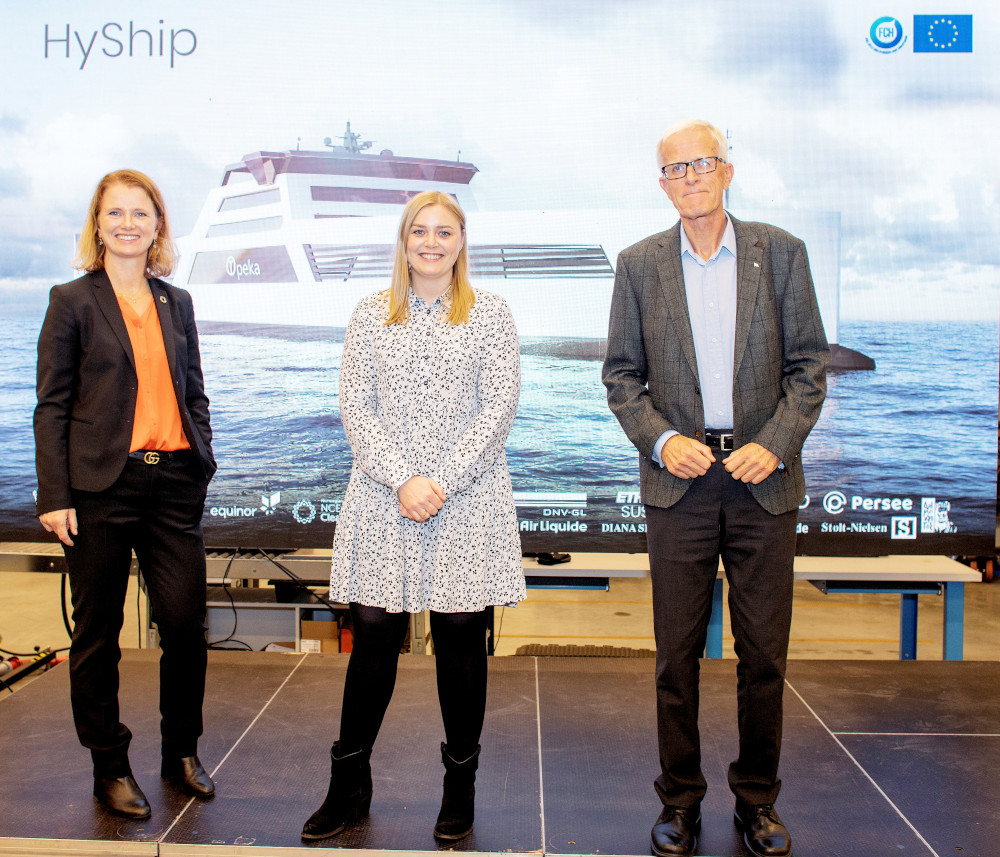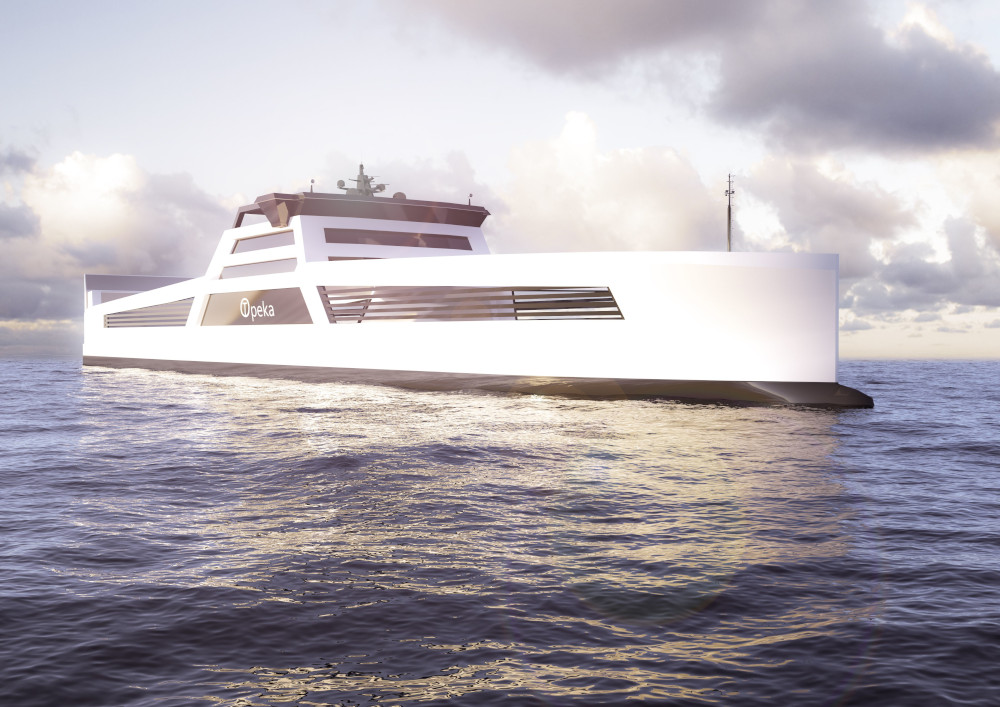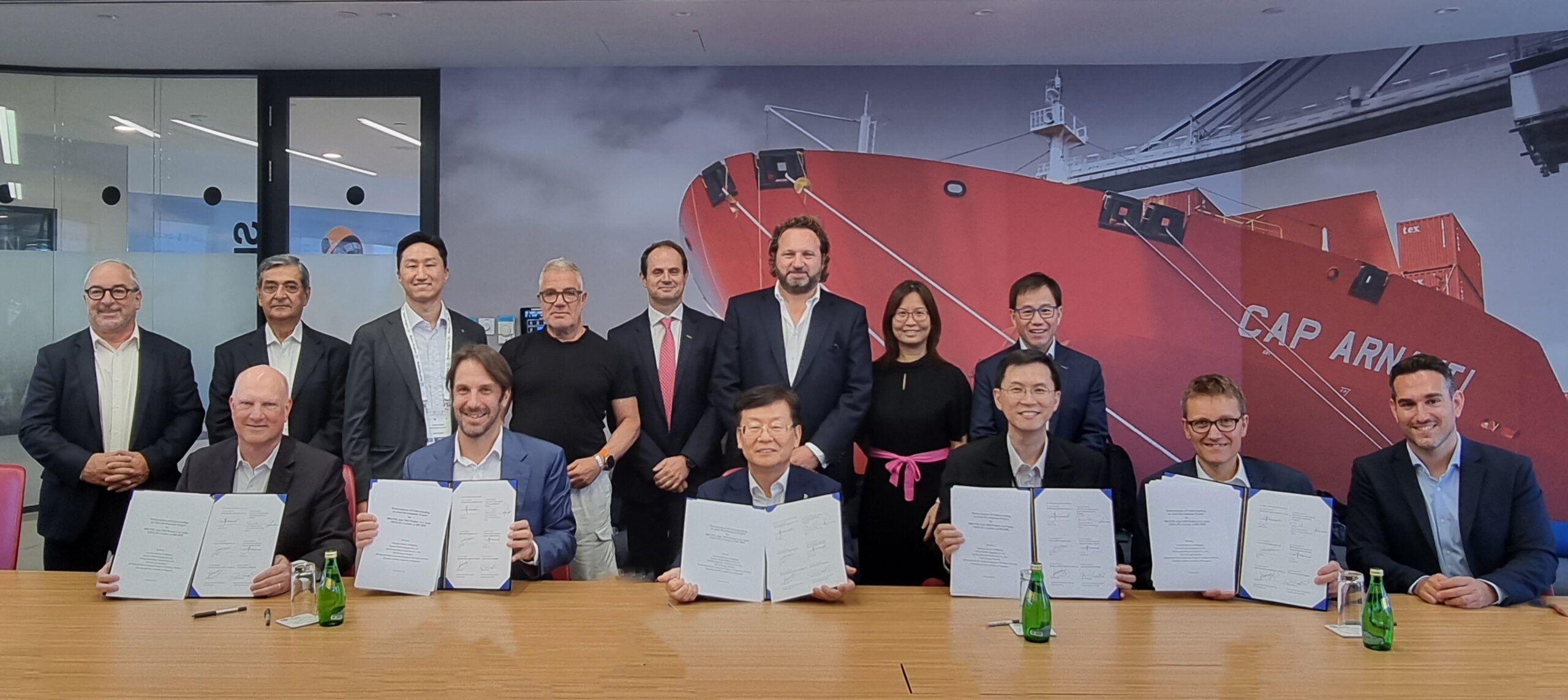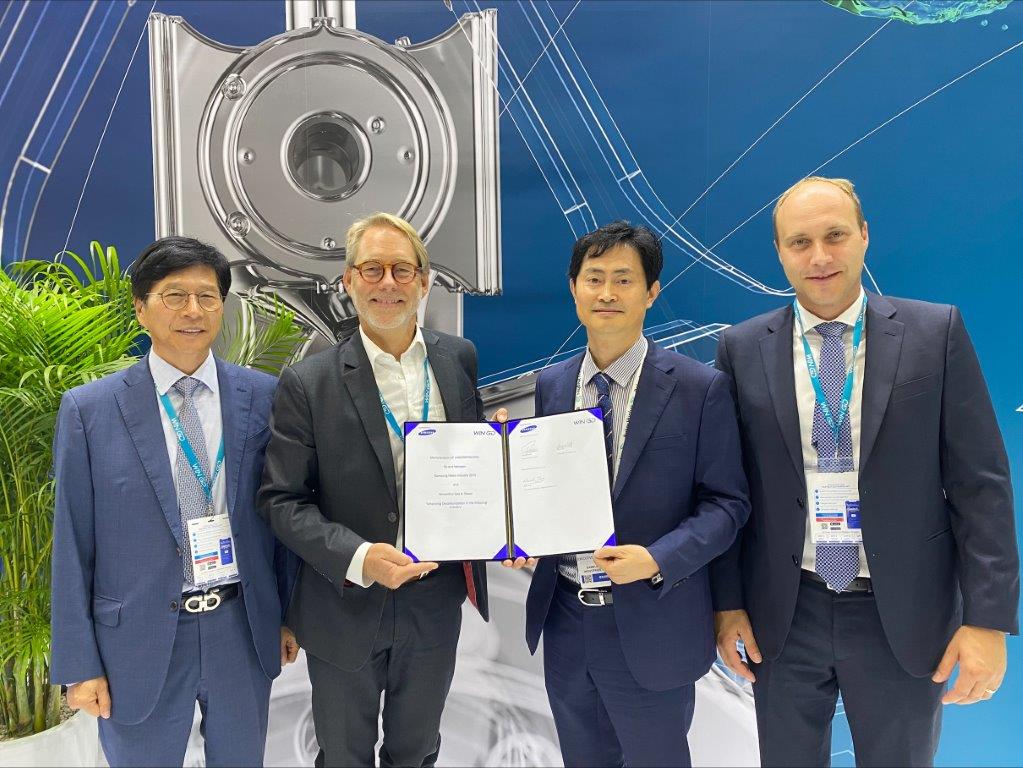Which came first? The Chicken or the egg? The hydrogen powered ship or the hydrogen bunker supply? Or do they both come together?
An EU funded project has promised to deliver one of the first fully hydrogen powered ships around Norwegian waters within four years. It will be a roro vessel for (containerised) hydrogen deliveries and cargo shipments around the country’s coastline as Norway builds up its infrastructure for a low carbon future.
The project is the Hyship project, launched on October 22nd .The vessel – project name is Topeka – will be a r-ro vessel powered by liquid green hydrogen (produced by renewable electricity) that will help establish a new bunker supply chain operating around the coast while offering a fixed schedule route for other shippers. Norwegian shipowner group Wilhelmsen, more commonly noted for its large red deep sea car carriers, will operate the vessel and will take the role of project leader.
Other project partners include Norwegian organisations Kongsberg Maritime, LMG Marin, Equinor, Norled, DNV GL and the NCE Maritime Cleantech.
Other European partners are Diana Shipping, Stolt-Nielsen Inland Tanker Service, Air Liquide, ETH Zürich, Persee, Strathclyde University and Demokritos.
The €8m funding which will come from the Horizon 2020 programme is still subject to a grant agreement by the project partners by the end of the year.
By taking a two in one approach the project partners, through various social media posts and press releases, have explained how the vessel will have the role of securing the bunkering infrastructure for liquid hydrogen while still being commercially viable as a coastal cargo vessel.
This is clearly a lesson learned from the early days of LNG as a marine fuel where many proponents of the alternative fuel say slow take up was in part due to a reluctance from owners to build LNG-powered vessels for fear of a lack of fuel supply, while fuel suppliers believed that there was little economic value in investing in an LNG fuel network if there is little demand.

A containerised hydrogen supply network running in tandem with other cargos helps overcome these “chicken and egg” fears.
The project partners say the Hyship will be a large-scale validation of both the ship, its innovative power system, and the distribution network. The bunkering hubs will in the future supply liquid hydrogen fuel for ferries and seagoing tonnage.
Design
The Topeka vessel will be built for zero emission through a combination of 1,000 kWh battery capacity and a three-megawatt proton exchange membrane hydrogen fuel cell.
The fuel will be sourced from the new LH2 production plant planned at Mongstad outside Bergen by BKK, Equinor and Air Liquide.
The Hyship project partners will also conduct three replicator studies, including a smaller, 1MW tanker barge for use on inland waterways, a 3MW fast ferry and a scaling-up study on a larger, 20MW energy system for deepsea vessels using a capesize bulk.

































